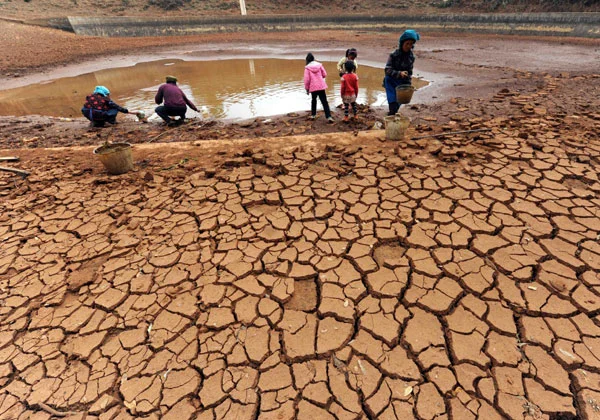Zimbabwe has taken the grave step of declaring a state of disaster due to a devastating drought sweeping across much of southern Africa. President Emmerson Mnangagwa emphasized the urgent need for $2 billion in humanitarian assistance to address the dire situation.
The declaration was not unexpected, following similar actions by neighboring countries Zambia and Malawi, which have also been ravaged by drought linked to the El Niño weather phenomenon. This weather pattern has led to scorched crops, leaving millions of people in need of food aid.
President Mnangagwa highlighted the severity of the situation, stating that over 80% of Zimbabwe has received below-normal rainfall due to the El Niño-induced drought. His top priority is ensuring food security for all Zimbabweans, emphasizing that no citizen should suffer or perish from hunger.
Appeals have been made to various entities, including United Nations agencies, local businesses, and faith organizations, to contribute to humanitarian efforts.
The impact of El Niño on weather patterns in southern Africa typically results in below-average rainfall. However, this year’s drought is described as the worst in decades, exacerbating food insecurity across the region.
In response to the crisis, the United Nations’ World Food Program has initiated a food assistance program targeting approximately 2.7 million people in Zimbabwe, which constitutes nearly 20% of the country’s population, from January to March.
Traditionally, the first few months of the year are considered the “lean period,” during which households face shortages while awaiting the new harvest. However, with little hope of replenishing food stores this year, President Mnangagwa anticipates an even greater need for food aid than previously forecasted.
In Zimbabwe, where over 60% of the population resides in rural areas and relies on subsistence farming, the impact of the drought is particularly acute. Many individuals are unable to afford food, even when it is available in markets, due to their limited participation in the cash economy.
Zimbabwe, once known as a regional agricultural powerhouse and grain exporter, has increasingly relied on aid agencies to mitigate mass hunger caused by extreme weather events such as heatwaves and floods in recent years.
While President Mnangagwa’s declaration paves the way for aid agencies to mobilize international support, the resources available may still fall short of meeting the needs of all affected populations. Limited funding, exacerbated by a global hunger crisis and cuts in humanitarian aid from wealthy governments, means that assistance may be targeted primarily towards the most vulnerable individuals.
Southern Africa as a whole is grappling with a food crisis due to the ongoing drought. Zimbabwe’s previous declaration of a state of national disaster in 2019, prompted by a failed crop, underscores the severity of the situation.
The dire conditions extend beyond Zimbabwe’s borders, with neighboring countries such as Zambia and Malawi also facing significant challenges. Zambian President Hakainde Hichilema declared the current drought a national disaster in February, highlighting the widespread destruction of staple crops. Similarly, Malawian President Lazarus Chakwera emphasized the urgent need for humanitarian assistance in response to the drought affecting millions of households.
According to the United States Agency for International Development (USAID), approximately 20 million people in southern Africa require food relief between January and March. These needs are projected to persist into early 2025 in areas most severely affected by El Niño, including Zimbabwe, southern Malawi, parts of Mozambique, and southern Madagascar.
Overall, the situation in southern Africa underscores the urgent need for coordinated international efforts to address food insecurity and provide crucial humanitarian assistance to millions of vulnerable individuals facing the devastating impact of drought and climate change.


















